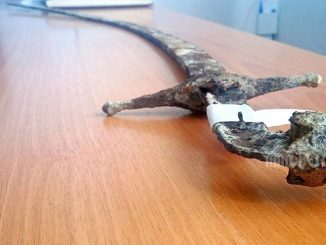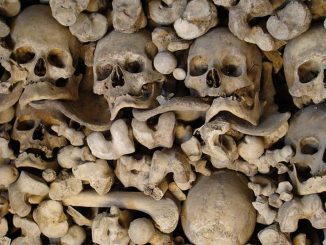Excavation activities at a nature reserve in Israel have just revealed 44 extremely rare gold coins from the Byzantine period.
 Excavation in Northern Israel revealed 44 coins made from pure gold. (Source: Live Science)
Excavation in Northern Israel revealed 44 coins made from pure gold. (Source: Live Science)
Israeli archaeologists have just discovered 44 rare coins from the Byzantine Empire and many other valuable items.
The coins contained in this “treasure” appear to have been minted during the reigns of Emperor Phocas (AD 602 to 610) and Emperor Heraclius (AD 610 to 641).
All coins were made from pure gold, which was the common form of currency during the Byzantine period (circa 330 to 1453 AD).
Experts from the Israel Antiquities Authority (IAA) dated these coins to the time of the Muslim conquest of Byzantine Palestine, which took place in 635 AD.
“Most of the coins belong to the time of the Byzantine Emperor Heraclius,” Gabriela Bijovsky, an expert on ancient coins at the IAA, said in the official announcement. “What is especially interesting is that during (Heraclius’s) early years as emperor, only his portrait was depicted on coins. But a short time later, the images of his sons also appeared on coins coin, about the same size as his father, who is described as having a long beard.”
Researchers discovered these coins at the Hermon Stream Nature Reserve in Northern Israel. This was once the ancient city of Banias (also known as Paneas or Panias), a place of worship for Pan, the half-man, half-goat fertility god in Greek mythology.
The coin hoard was found at the foot of a stone wall. Experts believe it was left behind by someone fleeing during the Muslim conquest.
“The new discovery mirrors a specific moment in the past,” said Yoav Lerer, director of excavations at the IAA. We can imagine the owner of this vault is trying to hide his assets in the face of war, hoping that one day he will come back to retrieve it,” he said. “Looking back now, we know that person was not lucky.”
In addition to the coins, researchers found the remains of a structure, water channels and pipes, ceramic kilns, copper coins and many fragments of pottery, glass, and metal artifacts. .
According to the archaeological team, the discovery of the coin hoard could shed light on the economy of the city of Banias during the last 40 years of rule of the Eastern Roman Empire.


